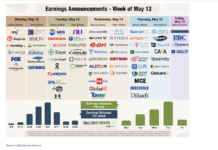The Answer May Surprise You…
Market volatility has been a hot topic this year, largely due to its historic lack of activity while staying at record setting low levels as measured by the VIX Volatility Index (INDEXCBOE:VIX).
This abnormal volatility environment has caused a sense of anger with many investors and traders alike. They want volatility, they seek out volatility, they need volatility. Now that they haven’t gotten it many are calling for a bubble within the financial markets. Whether it’s a bubble in short-volatility, a bubble in technology stocks, or just a bubble in equities as a whole – their upset and they want the bubble to pop so their precious market volatility will return.
Since bubbles in financial assets aren’t something we experience on a weekly basis, there’s not a lot of mental recognition of the environments that surround them. Ask someone a question pertaining to the 2007 peak in stocks and volatility and they’ll likely point to who volatility was well off its low by the time the major stock indices put in their peak. If you were to ask me the same question that’s probably the answer I would have given too. This response is what makes this recent research by three professors in Zurich Switzerland so interesting.
Titled, “Can We Use Volatility to Diagnose Financial Bubbles? Lessons from 40 historical bubbles”, Sornett, Cauwels, and Smilyanov studied the past40 bubbles in financial history from markets, commodities, to individual stocks in order to uncover if there was any commonalty to volatility before the bubbles burst. The short answer of the 127 page paper? No.
 While we did see a rise in the Volatility Index (VIX) before the 2007 market peak, that type of activity is not normal or common before prior financial manias. These professors concluded, “Our main finding is that volatility is neither a reliable indicator of the maturation of a bubble nor of its impeding ending in a crash. In contradiction with some claims that the volatility increases before a crash, we report, based on extensive empirical observations, that it does not consistently show such a behavior. If any conclusion can be drawn, it is the opposite”
While we did see a rise in the Volatility Index (VIX) before the 2007 market peak, that type of activity is not normal or common before prior financial manias. These professors concluded, “Our main finding is that volatility is neither a reliable indicator of the maturation of a bubble nor of its impeding ending in a crash. In contradiction with some claims that the volatility increases before a crash, we report, based on extensive empirical observations, that it does not consistently show such a behavior. If any conclusion can be drawn, it is the opposite”
In fact of the 40 bubbles that were evaluated 65% of them were noted to have subdued volatility at the ‘crest’ of the bubble period. They even go on to argue that because low volatility can in fact lead to the peak of a bubble, it calls into question the basis of the Capital Asset Pricing Model (CAPM), “In contrast to the generally accepted paradigm of fundamental valuation, based on the expected return and the expected risk […] the “Fearless” bubbles are situations where a low volatility corresponds to a high imminent risk. This paradoxical behavior, from the lenses of traditional asset pricing models, casts further doubts on the supposed general relationship between risk and return.”
To read the paper in its entirety: Can We Use Volatility to Diagnose Financial Bubbles? Lessons from 40 historical bubbles (Swiss Financial Institute)
While as investors we often must battle recency bias when evaluating the market we just keep to what the data says. This applies to the notion that while the VIX did in fact rise well off its lows into the ‘07 peak, that is not a historical benchmark for bubble-style evaluation. When the data and research says something contradictory to our previously held beliefs we must adapt.
Twitter: @AndrewThrasher
Any opinions expressed herein are solely those of the author, and do not in any way represent the views or opinions of any other person or entity.






